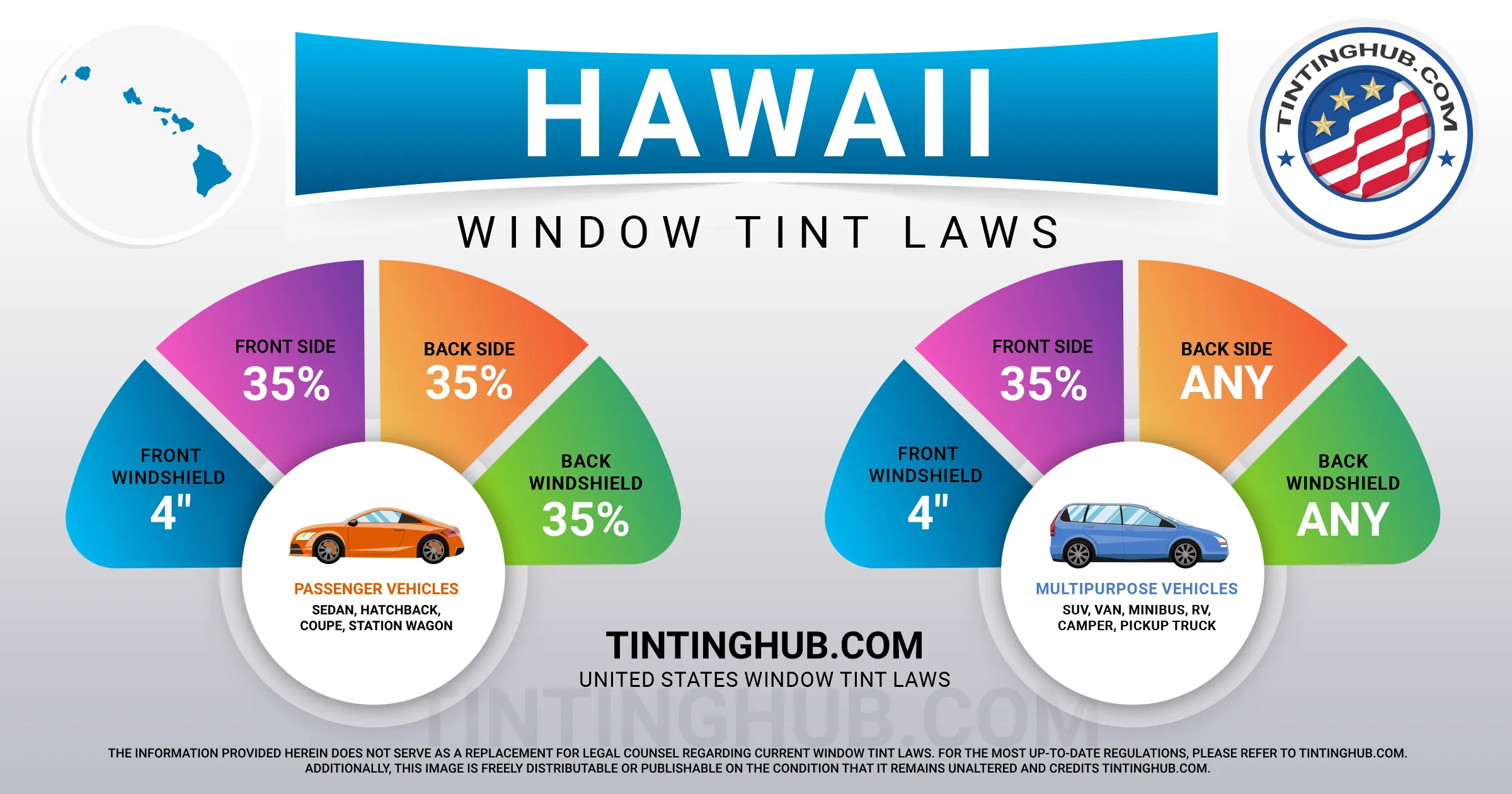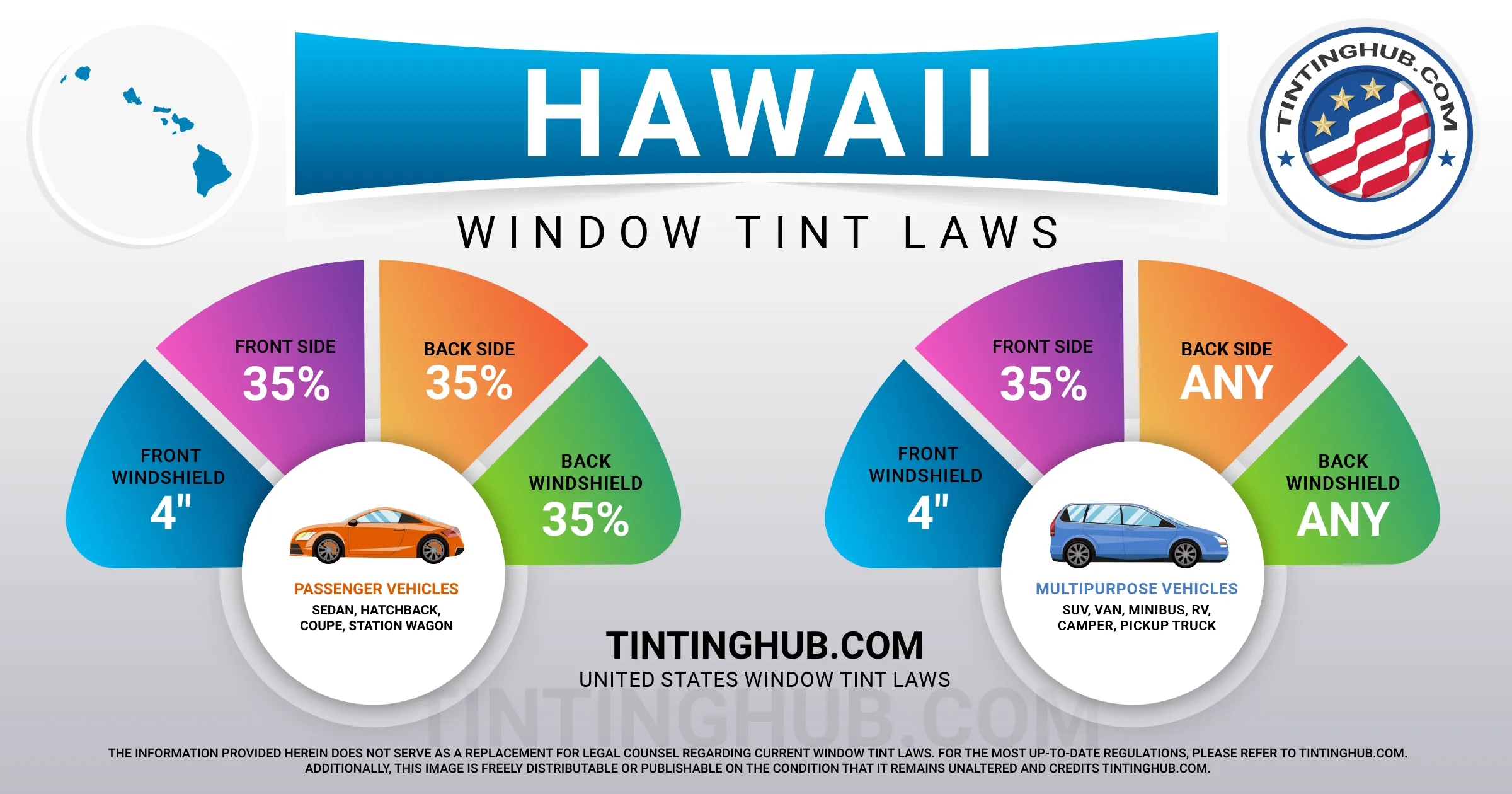Hawaii Window Tint Laws (Last Update 2024)

When it comes to car window tinting laws, Hawaii has had its rules in place since 1989. We’re here to guide you through all the essential details regarding window tint darkness, reflection, and other important regulations you need to know.

Window Tint Darkness in Hawaii
In Hawaii, they measure the percentage of visible light allowed through your car windows as VLT, or Visible Light Transmission. However, these regulations vary between sedan cars and SUVs or vans.
Tint Darkness for Sedans:
- Windshield: Non-reflective tint is allowed on the top 4 inches of the windshield.
- Front Side Windows: Must allow more than 35% of light in.
- Back Side Windows: Must allow more than 35% of light in.
- Rear Window: Must allow more than 35% of light in.
Tint Darkness for SUVs and Vans:
- Windshield: Non-reflective tint is allowed on the top 4 inches of the windshield.
- Front Side Windows: Must allow more than 35% of light in.
- Back Side Windows: Any darkness can be used.
- Rear Window: Any darkness can be used.
Keep in mind that you must request your window tint installer to issue a certificate of compliance, and you should keep it in your vehicle at all times.
Window Tint Reflection in Hawaii
Window tint serves to reduce glare and heat by reflecting incoming light. Hawaii’s window tint law has specific regulations regarding tint reflection, which you should be aware of.
Tint Reflection for Sedans:
- Front Side Windows: No metallic or mirrored appearance.
- Back Side Windows: No metallic or mirrored appearance.
Tint Reflection for SUVs and Vans:
- Front Side Windows: No metallic or mirrored appearance.
- Back Side Windows: No metallic or mirrored appearance.
Other Hawaii Window Tint Regulations
In addition to darkness and reflection rules, Hawaii has other important laws and regulations related to window tinting:
- Side Mirrors: If your back window is tinted, dual side mirrors are required.
- Restricted Colors: There are no specified colors of tint that are banned.
- Tint Variance: A variance of 6% is allowed.
- Certificates: Film manufacturers are not required to certify the film they sell in this state.
- Stickers: Hawaii law does not require a sticker to identify legal tinting.
- Medical Exceptions: Hawaii law does not allow medical exemptions for special tint.
- Penalties: Vehicle owners may incur fines ranging from $250 to $500, while businesses can receive fines ranging from $500 to $1000.
People in various counties or places of residence may interpret Hawaii’s tinting laws and regulations differently. To ensure you’re complying with the most up-to-date regulations, we recommend double-checking this information with your local DMV or law enforcement authorities.
We last updated our information on window tint laws in Hawaii in 2023. If you come across any outdated or incorrect information, please don’t hesitate to contact us so we can make the necessary updates. We take pride in being a trusted industry leader in providing accurate window tint law information.